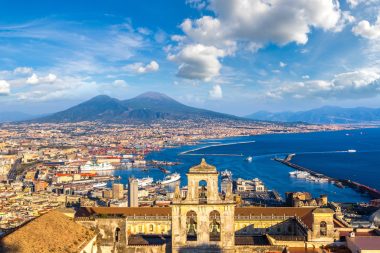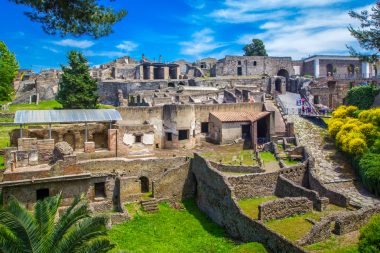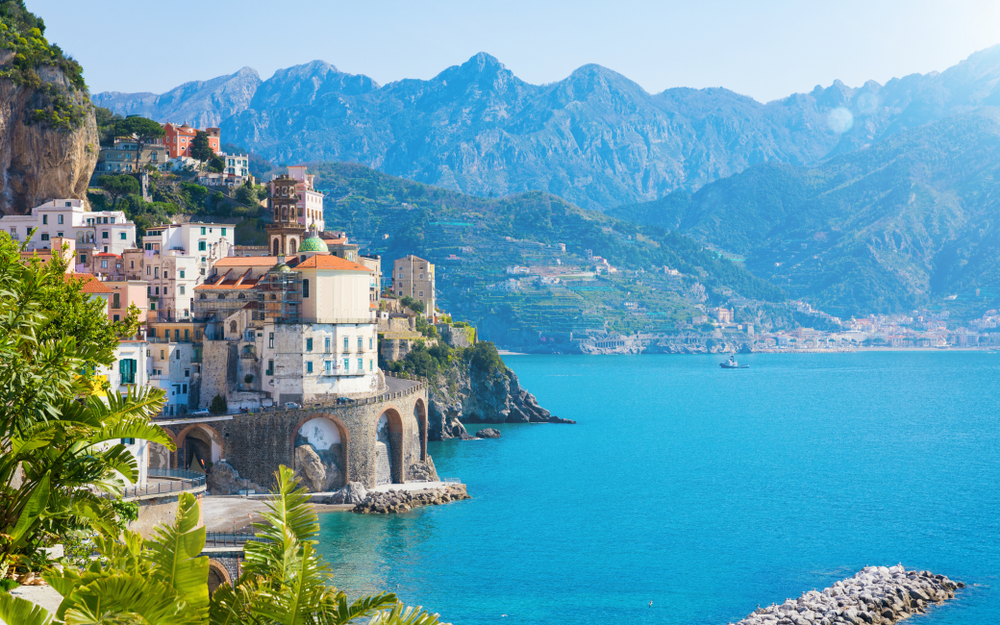The Campania region in the southwest of Italy is characterized by its diversity and invites you to spend varied days in a charming environment. In addition to beautiful landscapes and inviting beaches, the metropolis of Naples and numerous historical sites such as Pompeii and Herculaneum attract many visitors. It doesn’t matter whether you want to hike in peace or prefer to relax on the beach. Campania offers just the right thing for every taste.
Due to its many cultural sights, which often provide exciting insights into the eventful past of the region, Campania is an interesting place to visit. Hospitable residents and a relaxed atmosphere ensure that a stay in Campania is a relaxed affair.
When exploring this still very pristine region, you should also pay attention to the local cuisine, as it has many delicacies in store. Due to Campania’s location on the Mediterranean, fresh fish and seafood dominate the sumptuous selection of tasty dishes offered in the many rustic restaurants in the region. But tomatoes and mozzarella also play a very important role in Campania’s cuisine.
Magnificent coasts and a charming hinterland make Campania a dream for nature lovers
In terms of landscape, Campania has a lot to offer. The Amalfi Coast on the Gulf of Salerno is considered one of the most beautiful stretches of coast in all of Italy and is a very worthwhile destination due to its picturesque villages and towns.
To experience the Amalfi Coast in all its beauty and enjoy breathtaking views of the Mediterranean Sea, it is recommended to drive along the Amalfitana coastal road. Another area within Campania whose natural scenery should not be missed is the suggestive Cilento and Vallo di Diano National Park.
This very varied park stretches from the coast of Campania to the mountain range of the Apennines in the interior and impresses with imposing cliffs, picturesque river valleys and extensive olive groves. The often very idyllic valleys of the national park are home to a very interesting flora and fauna, which you can get to know, for example, on extended hikes. Probably the most spectacular natural monument in Campania, however, is undoubtedly the still active volcano Vesuvius, directly above Naples, at whose crater you get a very good impression of the power that lies dormant in it. In addition to insights into a world of its own, a visit to Mount Vesuvius also offers fantastic views of Naples and the Mediterranean Sea.
Naples – a metropolis full of secrets

The social and political centre of Campania is the city of Naples, which is known for its old town and has its own flair. Due to the large number of cultural monuments and historic buildings within the old town, it is a UNESCO World Heritage Site and is a very interesting area for long walks through the narrow streets that characterize the neighborhood.
But there is also a lot to discover beyond the old town in the charming port city of Naples. For example, the three most important fortresses in Naples, which are located in different districts of the city and all shape the cityscape in their own way, are very striking and worth seeing. To get around the hilly terrain of Naples, there are various public transport options available, of which the 4 funiculars are probably the most curious. These make it possible, among other things, to reach the Vomero hill from the low-lying districts. The many palaces of Naples are also very evocative, among which the former palace of the viceroys Palazzo Reale and the Palazzo Reggia di Capodimonte, surrounded by a large park, stand out.
Fascinating testimonies of past eras characterize Campania

Due to the turbulent history of southern Italy, which has been settled by different peoples over the centuries, Campania is rich in world-class historical sites. The most famous are probably the ruins of the ancient city of Pompeii, which was buried under ash by an eruption of nearby Vesuvius, which has led to very good preservation.
The ruined city, which is thus very well preserved, provides unique insights into a time long ago and is a place where history seems to come alive. Other important archaeological sites in Campania are Herculaneum and Torre Annunziata, which, like Pompeii, are cities buried by volcanic ash, whose preserved remains can be visited.
The Palace of Caserta north of Naples is also very important, which is considered one of the largest palace complexes in Europe and was once built for the royal house of the Bourbons. This architectural marvel of the Baroque, surrounded by an impressive castle garden, is a very popular attraction. Also worth seeing are various ancient sites in the Cilento and Vallo di Diano National Park, such as the Charterhouse of Padula and various archaeological sites.


